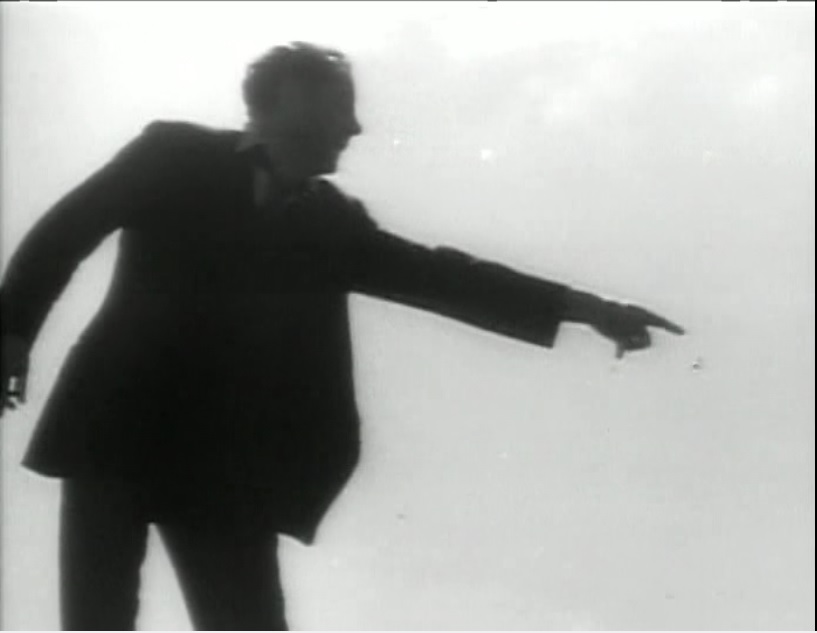Movie Review: Blackmail (1929) directed by Alfred Hitchcock
Alice White, who works in her father’s tobacco shop, is bored with her police detective boyfriend Frank. She acts obnoxiously during a date with him, causing Frank to cancel. But Frank hesitates long enough outside the restaurant to see Alice leave with handsome artist Mr. Crewe, who’d arranged to meet Alice there.

It’s clear that Alice and Mr. Crewe don’t know each other well, but he pressures her into a visit to his studio apartment. He’s clearly a skilled painter, and also plays the piano and sings. The two young people flirt, and Alice tries on a model’s ballerina dress (which she’s a trifle too big for.) All seems to be going well until Mr. Crewe forces a kiss on Alice. Unconsenting, Alice decides to leave, but Mr. Crewe takes away her street clothes, and then (behind a curtain) attempts to rape Alice. She stabs him to death in self defense.
Distraught and dazed, Alice obscures some evidence that she was at the apartment, but forgets her gloves. She wanders until dawn, then successfully fakes having been in bed.
Frank finds Alice’s glove at the scene of the crime and recognizes the murder victim, but pockets the evidence and does not tell the other Scotland Yard men about his knowledge. He goes to Alice’s shop and attempts to discover her connection to the crime. But their conversation is seen by another man. As it so happens, he saw Alice go into the artist’s building on the night of the murder…and has her other glove! He’s got blackmail on his mind.
This was Alfred Hitchcock’s first talkie, and indeed is considered the first “full” talkie from England. It was initially filmed as a silent film but many scenes were reshot during production. The first few minutes of the talkie version are “silent” as we see Frank’s workday, capturing a criminal, interrogating him, a lineup, and then pressing charges. Only when the detectives are in the locker area at the end of the day do we first hear talking.
One effect of the switch to sound was a problem with Alice’s actress, Anny Ondra. Her strong Czech accent was considered unacceptable for playing a working class British girl, so British actress Joan Barry had to stand just off-camera and speak Alice’s lines while Anny mouthed them. This was Ms. Ondra’s last English film but she went on to a successful career in Germany, France and Czechoslovakia.
The film has Hitchcock’s trademarks: a heavy dose of suspense, a famous landmark as the site of the climax (the British Museum) and a cameo by the director himself. It also has an ambiguous ending of the type that would soon be unacceptable under the Hays Code.
The imagery gets a little heavy-handed from time to time, more suitable for the silent version I think, but the painting of the clown who points and laughs at you is a good recurring image. Hitchcock did also start using some sound tricks to good effect; the best of these is a gossipy neighbor whose monologue slowly fades out except for the repeated use of the word “knife.”
The old-fashionedness of the film (based on a stage play and you can tell) is part of its charm, but may grate on younger viewers who aren’t used to it. New film fans may want to start with some of Hitchcock’s Hollywood movies from the late Thirties to ease into it.

